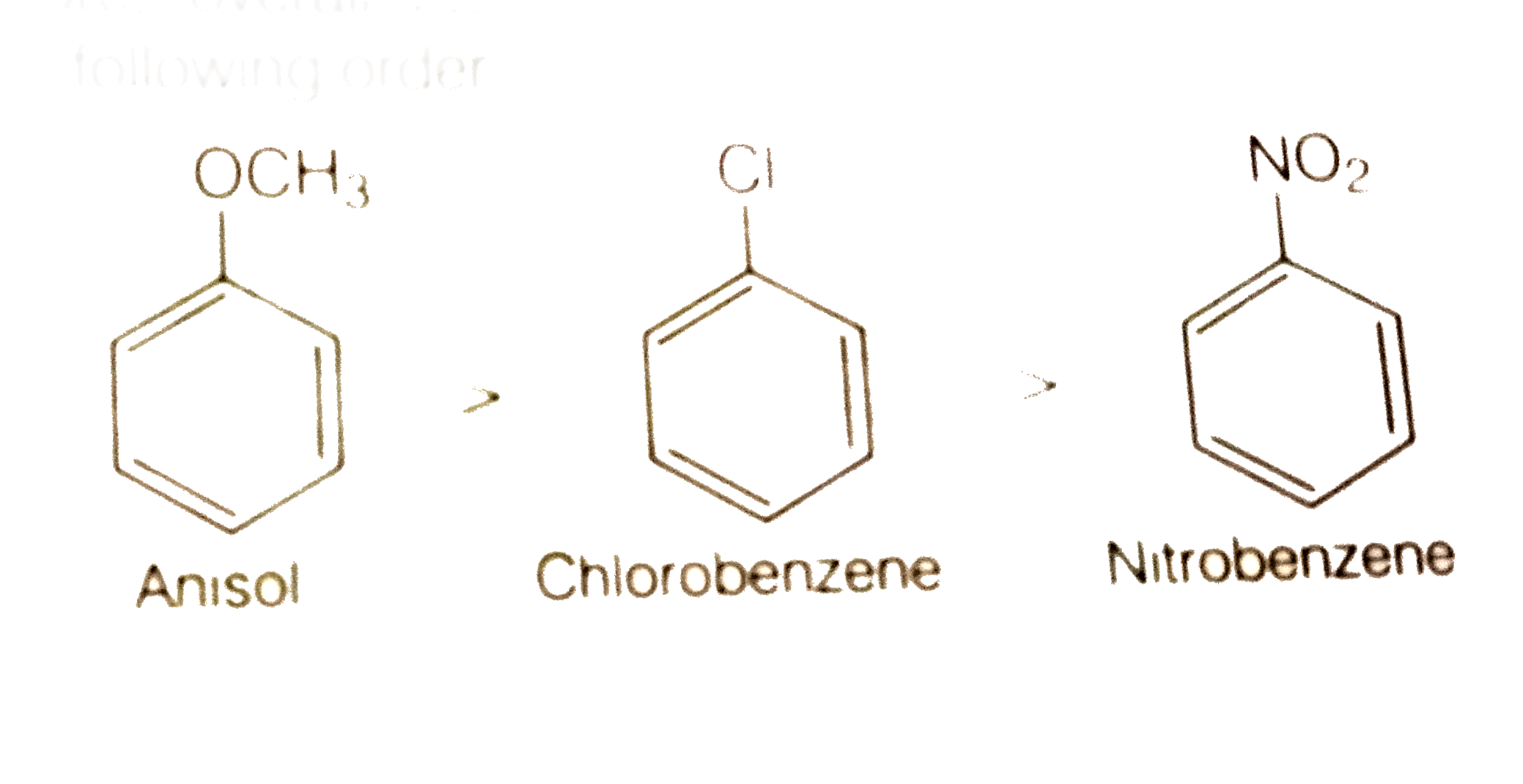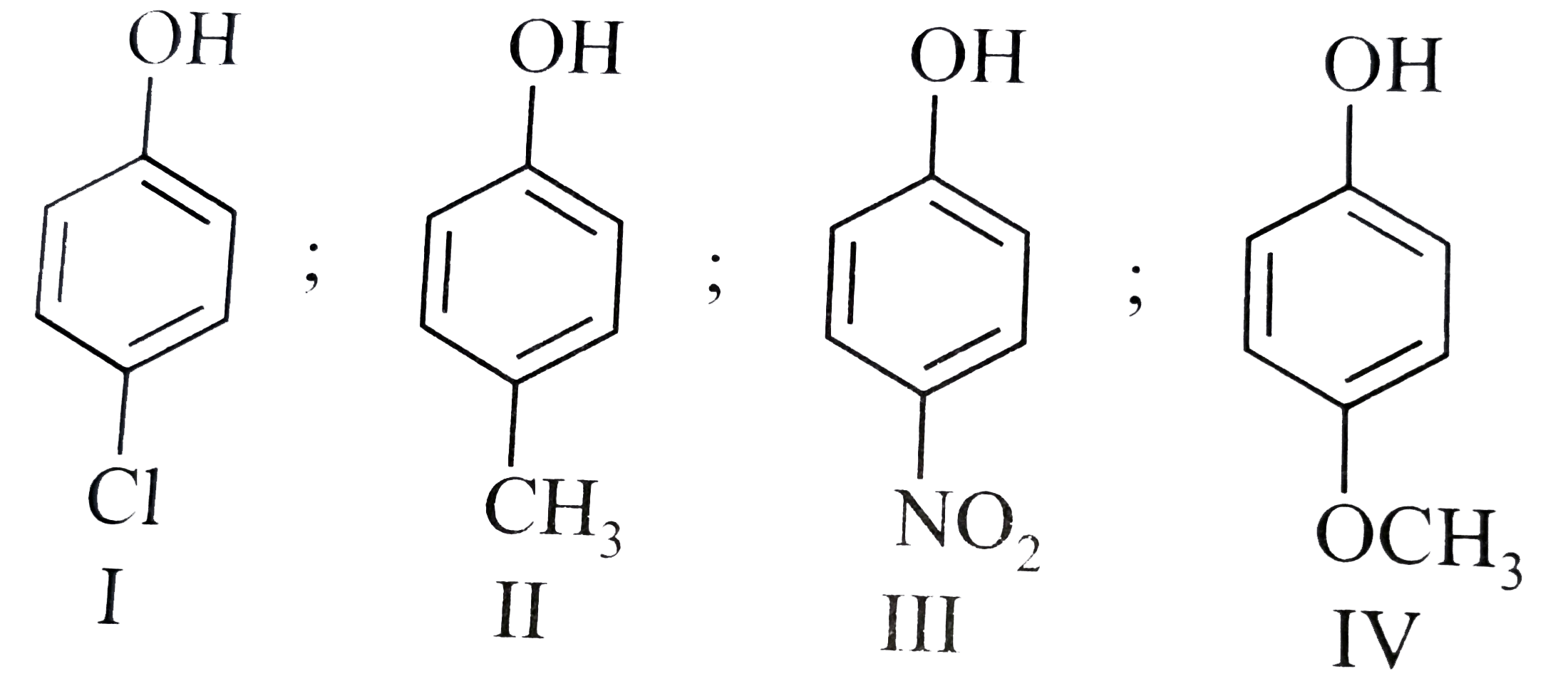Arrange the following compounds in order of their decreasing reactivity with an electrophile,E(+)
i) Chlorobenzene
ii) 2,4- dinitrochlorobenzene
iii)p- nitrochlorobenzene
C gt B gt A
B gt C gt A
A gt C gt B
A gt B gt C
The correct Answer is:C
Electron-withdrawing groups in the benzene ring decrease the reactivity towards electrophilic substitution. Since Cl is a weaker electron-withdrawing group that NO2, therefore , chlorobenzene (A) is more reactive than p-nitrochlorobenzene (C ) which , in turn, is more reactive than 2,4-dinitrochlorobenzene (B), i.e., option (c) is correct.
Topper's Solved these Questions
- BOOK - PRADEEPCHAPTER - HYDROCARBONSEXERCISE - TEST YOUR GRIP (FILL IN THE BLANKS )20videos
HYDROCARBONS
- BOOK - PRADEEPCHAPTER - HYDROCARBONSEXERCISE - CONCEPTUAL Questions28videos
HYDROCARBONS
- BOOK - PRADEEPCHAPTER - HYDROCARBONSEXERCISE - PROBLEMS FOR PRACTICE3videos
HYDROCARBONS
- BOOK - PRADEEPCHAPTER - EQUILIBRIUM IN PHYSICAL AND CHEMICAL PROCESSESEXERCISE - Competition Focus (Jee(Main and advanced)/Medical Entrance) VIII. ASSERTION - REASON TYPE QUESTIONS (TYPE - II)10videos
EQUILIBRIUM IN PHYSICAL AND CHEMICAL PROCESSES
- BOOK - PRADEEPCHAPTER - HYDROGEN EXERCISE - COMPETITION FOCUS (Assertion-Reason Type Questions) Type 215videos
HYDROGEN
Similar Questions
Arrange the following set of compounds in order of their decreasing relative reactivity with an electrophile, E+
(a) Chlorobenzene, 2,4-dinitrochlorobenzene, p-nitrochlorobenzene
(b) Toluene, p−H3C–C6H4–NO2,p−O2N–C6H4–NO2.View SolutionArrange the following set of compounds in order of their decreasing relative reactivity with an electrophile, E+
(a) Chlorobenzene, 2,4-dinitrochlorobenzene, p-nitrochlorobenzene
(b) Toluene, p−H3C–C6H4–NO2,p−O2N–C6H4–NO2.View Solution
Knowledge Check
- Question 1 - Select One
Arrange the following set of compounds in order of their decreasing relative reactivity with an electrophile, E+
(a) Chlorobenzene, 2,4-dinitrochlorobenzene, p-nitrochlorobenzene
(b) Toluene, p−H3C–C6H4–NO2,p−O2N–C6H4–NO2.A(iii)>(ii)>(i)B(ii)>(iii)>(i)C(i)>(iii)>(ii)D(i)>(ii)>(iii) - Question 2 - Select One
Arrange the following compounds in order of their decreasing reactivity with an electrophile,E(+)
i) Chlorobenzene
ii) 2,4- dinitrochlorobenzene
iii)p- nitrochlorobenzeneAC gt B gt ABB gt C gt ACA gt C gt BDA gt B gt C - Question 3 - Select One
Arrange the following set of compounds in the order of their decreasing relative reactivity with an electrophileE+
I.Chlorobenzene
II.2,4 dinitrochlorobenzene
III.P-nitrochlorobenzene
IV.toluene V.p−H3C−C6H4−NO2AI>II>III>IV>VBIV>V>I>III>IICV>IV>III>II>IDI>III>II>V>IV
Arrange the following set of compounds in order of their decreasing relative reactivity with an electrophile, E+.
(i) chlorobenzene, 2,4−dinitrochlorobenzene, p−nitrochloro benzene
(ii) toluene, p−H3C−C6H4−CH3,p−H3C−C6H4−NO2,p−O2N−C6H4−NO2View SolutionArrange the following set of compounds in the order of their decreasing relative reactivity with an electrophile . Give reason.
 View Solution
View SolutionArrange the following set of compounds in the order of their decreasing relative reactivity with an electrophile
 View Solution
View SolutionArrange the following set of compounds in the order of their decreasing relative reactivity with an electrophile
 View Solution
View SolutionArrange the following compounds in the order of decreasing acidity.
I II
II  III
III  IV
IV  View Solution
View Solution

